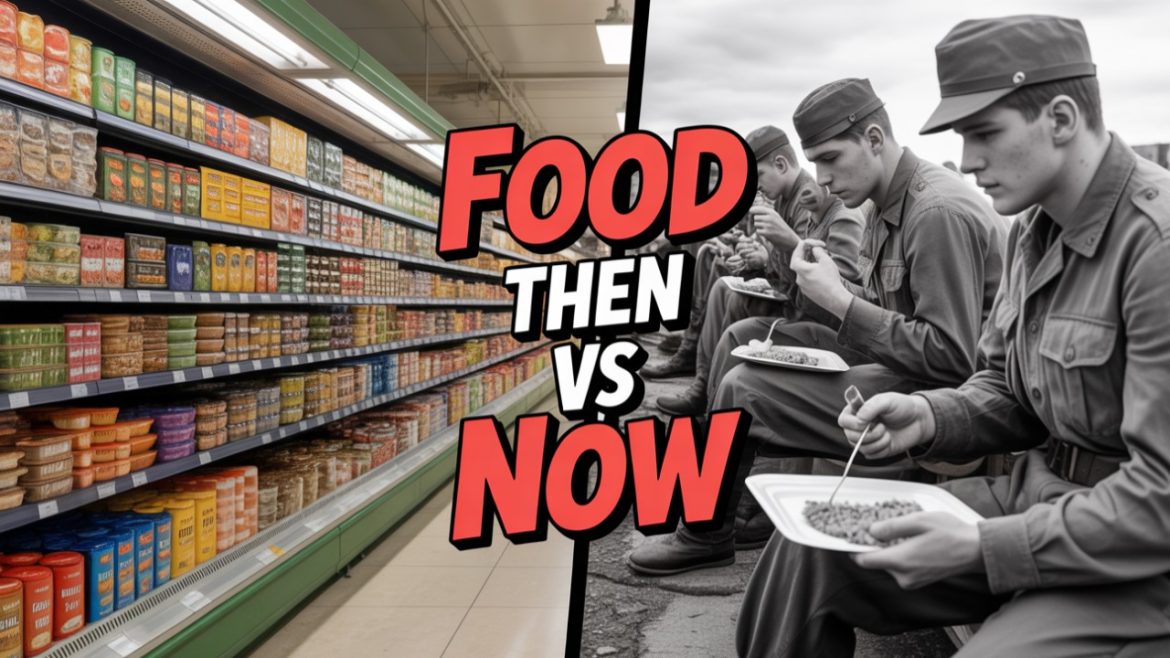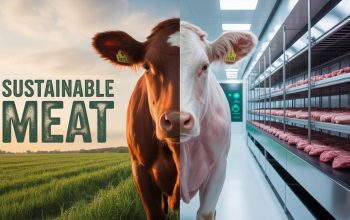### How War Changed the Way We Eat
Imagine biting into a can of Spam on a quiet evening, its salty, processed goodness a staple in your pantry. You might not realize it, but this humble meat product owes its existence to the chaos of World War II. Born out of necessity to feed troops with something shelf-stable and nutritious, Spam became a global icon, symbolizing how conflict has reshaped our plates. From ancient sieges to modern drone strikes, wars have not only destroyed lives but also revolutionized food—through inventions, rationing, cultural exchanges, and even the globalization of tastes. This isn’t just history; it’s the story of how battles fought far away dictate what we eat today. Let’s dive into the trenches of culinary evolution, exploring how necessity became the mother of dietary invention.
Wars have long influenced food, but the modern era kicked off with Napoleon Bonaparte’s ambitions in the early 19th century. Facing supply chain nightmares during his campaigns, Napoleon offered a hefty prize—12,000 francs—to anyone who could preserve food for his armies. Enter Nicolas Appert, a French inventor who pioneered canning by sealing food in glass jars and boiling them. This breakthrough, refined into metal cans by Englishman Peter Durand, transformed military logistics. No longer did soldiers rely on salted meats or foraging; they could carry portable, non-perishable meals. Canned goods exploded in popularity post-Napoleonic Wars, entering civilian kitchens and laying the groundwork for today’s tinned soups and veggies. But it wasn’t just preservation—condensed milk, another war-born innovation from the American Civil War, allowed for longer storage and easier transport, influencing everything from baking to baby formula.
Fast forward to World War I, where food became a weapon and a rallying cry. The Great War disrupted global trade, leading to shortages that forced nations to rethink eating. In the U.S., the Food Administration under Herbert Hoover promoted “Meatless Mondays” and “Wheatless Wednesdays” to conserve resources for troops and starving Europeans. Americans were urged to grow “victory gardens”—backyard plots that produced over 1.5 million tons of food by war’s end. This not only boosted self-sufficiency but instilled a culture of thrift and vegetable appreciation that lingers in community gardening today. Propaganda posters screamed “Food Will Win the War,” encouraging substitutions like corn for wheat and potatoes for everything else. Renaming foods to stoke patriotism was another quirk: sauerkraut became “liberty cabbage,” and hamburgers turned into “liberty steaks” amid anti-German sentiment. These changes weren’t temporary; they shifted diets toward more diverse grains and veggies, reducing reliance on imports and fostering a nascent farm-to-table ethos.
But it was World War II that truly turbocharged our modern eating habits, blending desperation with innovation on an unprecedented scale. Rationing hit hard: in the U.S., sugar was first in 1942, followed by coffee, meat, cheese, and fats. Families received ration books with stamps, forcing creative cooking. Butter shortages led to margarine’s rise, while meat scarcity birthed “wacky cake”—a dessert sans eggs, milk, or butter, using vinegar and baking soda instead. Victory gardens returned bigger than ever, with over 20 million Americans planting them, yielding 40% of the nation’s produce. Overseas, soldiers’ K-rations—compact, calorie-dense packs—inspired post-war convenience foods.
The military’s quest for efficient feeding sparked a flurry of inventions that stock our shelves today. Spam, created by Hormel in 1937 but mass-produced for Allied troops, provided protein in a can; by 1945, 65% of Hormel’s output went to the war effort. M&Ms were born when Forrest Mars saw Spanish Civil War soldiers eating chocolate pellets that didn’t melt; he partnered with Hershey to create the candy-coated treats for U.S. GIs. Cheetos emerged from dehydrated cheese experiments for rations, while instant coffee—perfected by Nestlé for troops—became a household staple. TV dinners? Thank frozen food tech developed to ship meals to the front lines, which boomed post-war as women entered the workforce. Even sliced bread, banned briefly in 1943 to save wax paper, was hailed as “the greatest thing since wrapped bread” upon its return—though ironically, its uniform slicing tech stemmed from earlier military baking efficiencies.
Nutrition science got a wartime boost too. The U.S. military, alarmed by malnourished recruits during the Great Depression, funded research into vitamins and fortified foods. This led to enriched breads and cereals, combating deficiencies like pellagra. Post-WWII, surplus tech like nitrogen from explosives became fertilizers, supercharging agriculture but also contributing to monocultures and processed foods’ dominance. In Europe, rationing lingered until 1954 in Britain, fostering a “waste not, want not” mentality that reduced food waste but also blandified diets—think boiled veggies and Spam fritters. Yet, this austerity sparked ingenuity: French cuisine simplified, emphasizing local ingredients, while in the U.S., the post-war boom saw meat-heavy meals as a rebellion against scarcity.
Wars also globalized our palates through soldiers’ wanderings. GIs returning from WWII brought exotic tastes home—Italian pasta, Asian stir-fries, and even soul food spread via African American troops stationed abroad. The Korean War birthed budae jjigae, a stew mixing U.S. rations like hot dogs and Spam with Korean kimchi, now a national dish. Military bases worldwide introduced American fast food, paving the way for McDonald’s global empire. During the Cold War, the U.S. viewed nutrition as anti-communist armor: the International Committee on Nutrition for National Defense surveyed hunger in vulnerable countries, fortifying diets to prevent ideological “seduction.” This era solidified processed, fortified foods as norms, influencing everything from school lunches to international aid.
Fast food’s rise post-WWII exemplifies war’s economic ripple. With women working (a habit from wartime factories) and suburbs sprawling, drive-thrus like McDonald’s—founded in 1948—offered quick, affordable meals. War tech enabled mass production: frozen fries from potato dehydration research, burgers from efficient meat processing. Today, this convenience culture contributes to obesity epidemics, a ironic twist on wartime anti-malnutrition efforts.
In modern conflicts, food remains a battleground. Wars in Ukraine and Gaza disrupt supplies, echoing WWI shortages, while climate change—exacerbated by militarized agriculture—threatens global security. Yet, positives emerge: energy bars from military rations fuel athletes, and plant-based alternatives trace roots to wartime meat substitutes.
War’s legacy on our plates is bittersweet. It birthed conveniences like canned tuna and M&Ms, but also over-reliance on processed foods and unequal access. As we face new crises, remember: every bite tells a story of survival, innovation, and sometimes, unintended consequences. Next time you grab a quick meal, think of the soldiers who made it possible—and perhaps plant a victory garden of your own.
(Word count: 1823)


